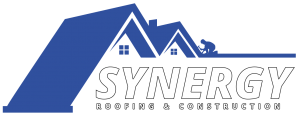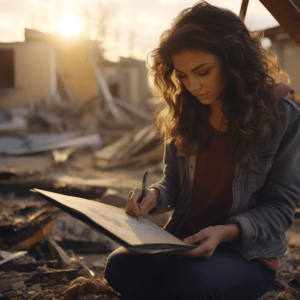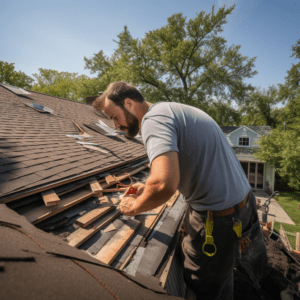Roofs serve as a vital protective barrier for buildings, shielding them from the harsh elements of nature. However, over time, roofs can sustain damage that may compromise their integrity and effectiveness. To ensure the longevity and safety of a roof, regular comprehensive inspections are essential. This article aims to provide a thorough understanding of the importance of roof inspections, the signs indicating potential damage, necessary tools and equipment for conducting inspections, as well as steps to address common roofing issues. Additionally, it will discuss how roof inspections contribute to preventive maintenance and offer guidance on hiring professional inspectors or undertaking DIY maintenance measures.
Key Takeaways
- Regular roof inspections are important for identifying potential issues early on and ensuring optimal condition and functionality.
- Signs of roof damage to look for include missing or damaged shingles, cracked or curled shingles, presence of granules in gutters or downspouts, and sagging areas on the roof surface.
- The tools and equipment needed for a comprehensive roof inspection include a ladder for safe access, binoculars for inspecting hard-to-reach areas, moisture meters to detect hidden water damage or leaks, shingle gauges to assess shingle alignment and condition, and pry bars for careful removal and inspection of roofing materials.
- A thorough roof inspection involves assessing the overall condition of the roof from ground level, examining gutters and downspouts for debris buildup or damage, inspecting the interior for visible signs of water damage, checking the attic space for signs of leaks or structural issues, and conducting a close-up inspection by physically climbing onto the roof.
Importance of Regular Roof Inspections
Regular roof inspections are important for identifying potential issues early and preventing costly damage in the long run. A comprehensive inspection involves a thorough assessment of the entire roofing system, including its materials, structure, and components. By conducting regular inspections, homeowners and property managers can ensure that their roofs remain in optimal condition and maintain their functionality over time.
One key benefit of regular roof inspections is the early detection of minor issues before they escalate into major problems. Inspectors can identify signs of wear and tear, such as loose or missing shingles, damaged flashing, or deteriorated sealants. Addressing these issues promptly can prevent water infiltration, which could lead to structural damage and mold growth if left unattended.
Furthermore, regular inspections allow for proactive maintenance measures to be taken. This includes clearing debris from gutters and downspouts to prevent clogging and ensuring proper drainage. Inspections also enable professionals to assess the integrity of flashing around chimneys, vents, skylights, and other penetrations on the roof surface.
In addition to preventing costly damage, regular roof inspections contribute to extending the lifespan of the roofing system. By addressing small issues early on and implementing appropriate repairs or maintenance measures promptly, homeowners can avoid premature roof failure and expensive replacement costs.
Overall, regular roof inspections provide an opportunity for homeowners and property managers to stay proactive in maintaining their roofs’ condition. By identifying potential issues early on through comprehensive assessments conducted by knowledgeable professionals, costly damage can be prevented while prolonging the life expectancy of the roofing system.
Signs of Roof Damage to Look For
Frequent visual examination of the condition of a roof can help identify potential signs of damage. There are several key indicators that homeowners should look for when inspecting their roofs. One common sign of damage is missing or damaged shingles, which can leave the underlying layers exposed to the elements and lead to leaks. Additionally, cracked or curled shingles can also be indicative of roof deterioration. Another sign to watch out for is the presence of granules in gutters or downspouts, as this could suggest that the protective layer on top of the shingles is wearing away. It is also important to check for any sagging areas on the roof surface, as this may indicate structural issues such as weakened supports or rotting wood. Furthermore, water stains on interior walls or ceilings are clear indications that there is a leak in the roof. In some cases, mold growth may also be present due to excess moisture penetrating through damaged areas. Finally, excessive energy bills can suggest poor insulation caused by gaps or openings in the roof structure. Regularly looking for these signs will allow homeowners to address any potential problems promptly and prevent further damage to their roofs and homes overall
Tools and Equipment Needed for a Comprehensive Roof Inspection
A thorough examination of the condition of a roof requires the use of specific tools and equipment. These tools are essential for conducting comprehensive roof inspections to identify any existing or potential issues. One such tool is a ladder, which allows inspectors to access different areas of the roof safely. Additionally, binoculars are used to inspect hard-to-reach areas without physically stepping on the roof surface. Roofing professionals also rely on moisture meters to detect hidden water damage or leaks within the roofing system. These devices measure moisture levels in various components, such as insulation or drywall, indicating potential problems.
To assess the overall structural integrity of a roof, inspectors utilize shingle gauges and pry bars. Shingle gauges help determine if shingles are properly aligned and undamaged, while pry bars allow for careful removal and inspection of individual shingles or other roofing materials when necessary.
Furthermore, infrared cameras play a crucial role in identifying heat loss points and insulation deficiencies that may contribute to energy inefficiency within buildings. This technology detects temperature variations across the roof’s surface, highlighting potential areas requiring further scrutiny.
Lastly, personal protective equipment (PPE) is vital during roof inspections to ensure safety throughout the process. Items such as hard hats, gloves, goggles, and harnesses protect inspectors from falls or injuries caused by hazardous conditions.
Step-by-Step Guide to Conducting a Thorough Roof Inspection
To conduct a thorough examination of a roof, it is important to follow a step-by-step guide that ensures all aspects of the inspection process are covered systematically. The first step in conducting a comprehensive roof inspection is to assess the overall condition of the roof from ground level. This involves visually inspecting for any signs of sagging, missing or damaged shingles, or areas where water may be pooling. Next, it is necessary to examine the gutters and downspouts for signs of debris buildup or damage that could impede proper drainage. After inspecting the exterior components, attention should be turned towards examining the interior of the property for any visible signs of water damage such as stains on ceilings or walls. Additionally, it is crucial to access the attic space and check for any signs of leaks or structural issues such as rotting wood or insulation problems. Finally, a close-up inspection should be conducted by physically climbing onto the roof and checking each section carefully for loose shingles, cracked flashing, or any other potential weaknesses that may require repair. By following this step-by-step guide, one can ensure a comprehensive and thorough examination of the entire roofing system.
Common Roofing Issues and How to Address Them
One common issue that homeowners may encounter with their roofs is the presence of leaks, which can lead to water damage and structural problems if not addressed promptly. Leaks in a roof can occur due to various reasons, such as damaged or missing shingles, cracked flashing, clogged gutters, or inadequate sealing around vents and chimneys. When these issues are ignored or left unresolved, they can result in significant damage to the underlying structure of the roof and even impact the integrity of the entire building.
To address leaks effectively, it is crucial to conduct a thorough inspection of the roof. This involves visually inspecting all areas for signs of damage or wear and tear. It is recommended to check for any loose or missing shingles, cracks in flashing around chimneys and vents, as well as any signs of moisture or discoloration on ceilings or walls inside the house. Additionally, inspecting gutters for debris buildup and ensuring proper drainage is essential.
Once leaks are identified during an inspection, prompt action should be taken to repair them. Depending on the severity of the issue, repairs may involve simple fixes like replacing missing shingles or resealing flashing with appropriate materials. In more severe cases where significant damage has occurred, it may be necessary to seek professional help from a licensed roofing contractor.
The Role of Roof Inspections in Preventive Maintenance
Roof inspections play a crucial role in preventing costly roof damage and extending the lifespan of the roof. By conducting regular inspections, potential issues such as leaks, cracks, or structural weaknesses can be identified and addressed before they become major problems. Additionally, these inspections allow for the evaluation of the overall condition of the roof, enabling property owners to implement necessary maintenance measures to ensure its longevity.
Preventing Costly Roof Damage
Minimizing the occurrence of costly roof damage is crucial for maintaining the longevity and functionality of a building. Roof damage can result in significant financial losses, disruption of operations, and compromised safety. To prevent such damage, comprehensive measures need to be implemented. Regular roof inspections play a vital role in identifying potential issues before they escalate into major problems. These inspections involve thorough assessments of the roofing system, including its materials, structure, and components. Professional inspectors use specialized tools and techniques to detect signs of deterioration, leaks, or structural weaknesses. By identifying and addressing these issues promptly, preventive actions can be taken to mitigate further damage and extend the lifespan of the roof. Additionally, routine maintenance tasks such as cleaning gutters and removing debris are essential for preventing water accumulation on the roof surface which can lead to leaks and decay over time. Overall, implementing preventative strategies through comprehensive roof inspections is essential for minimizing costly damages and ensuring the long-term functionality of a building’s roofing system.
Extending Roof Lifespan
Implementing regular maintenance tasks and promptly addressing potential issues are crucial for extending the lifespan of a building’s roofing system. Regular inspections help identify any existing or developing problems, allowing for timely repairs and preventive measures. These inspections should include a thorough examination of the roof’s surface, checking for signs of damage such as cracks, leaks, or loose materials. Additionally, it is important to inspect the gutters and downspouts to ensure proper drainage and prevent water accumulation on the roof. The inspection process should also involve an assessment of the flashing around chimneys, vents, and skylights to ensure their integrity. By conducting comprehensive roof inspections at regular intervals and taking prompt action when necessary, building owners can significantly prolong the lifespan of their roofing systems and avoid costly repairs or premature replacement.
Hiring a Professional Roof Inspector: What to Consider
When considering the hiring of a professional roof inspector, several important factors should be taken into account. First and foremost, it is essential to ensure that the inspector has the necessary qualifications and certifications. This includes verifying their membership in reputable industry associations and confirming their professional training and experience in conducting roof inspections.
Additionally, it is crucial to consider the inspector’s reputation within the industry. Reading reviews or seeking recommendations from trusted sources can provide valuable insights into their reliability, thoroughness, and attention to detail.
The scope of services offered by the inspector is another vital aspect to consider. A comprehensive roof inspection should include a thorough assessment of all components, such as shingles, flashing, gutters, ventilation systems, and insulation. Moreover, it should encompass an evaluation of both interior and exterior elements to identify any potential issues accurately.
Furthermore, it is advisable to inquire about the technology or tools employed during inspections. Advanced equipment like infrared cameras can help detect hidden moisture or insulation problems that may not be visible to the naked eye.
Lastly, obtaining detailed reports with clear documentation of findings is essential for effective decision-making regarding repairs or maintenance. The report should provide a comprehensive analysis of the roof’s condition along with recommendations for addressing any identified issues.
In conclusion, selecting a professional roof inspector requires careful consideration of qualifications,
reputation,
scope of services,
technology used,
and quality reporting.
By assessing these factors diligently,
property owners can make informed decisions about maintaining
or repairing their roofs,
thus ensuring longevity and safety for their investment.
DIY Tips for Maintaining the Health of Your Roof
To effectively maintain the health of a roof, it is important to regularly inspect and address any potential issues in a timely manner. A comprehensive inspection involves examining both the interior and exterior components of the roof to identify any signs of damage or deterioration. When conducting a DIY roof inspection, there are several key areas that should be carefully examined.
Starting with the interior, it is crucial to check for any signs of water leaks or stains on the ceilings and walls. These can indicate roofing problems such as damaged shingles or flashing. Additionally, checking the attic for proper ventilation and insulation is essential in preventing moisture buildup and potential damage.
Moving on to the exterior, a thorough examination of the roof surface is necessary. This includes inspecting all shingles for signs of cracking, curling, missing pieces, or loose nails. Paying close attention to areas around chimneys, vents, and skylights is vital as these are common trouble spots where leaks can occur.
Gutters should also be inspected for debris buildup or blockages that can lead to water backup and overflow onto the roof surface. Proper drainage ensures that excess water does not seep into vulnerable areas.




